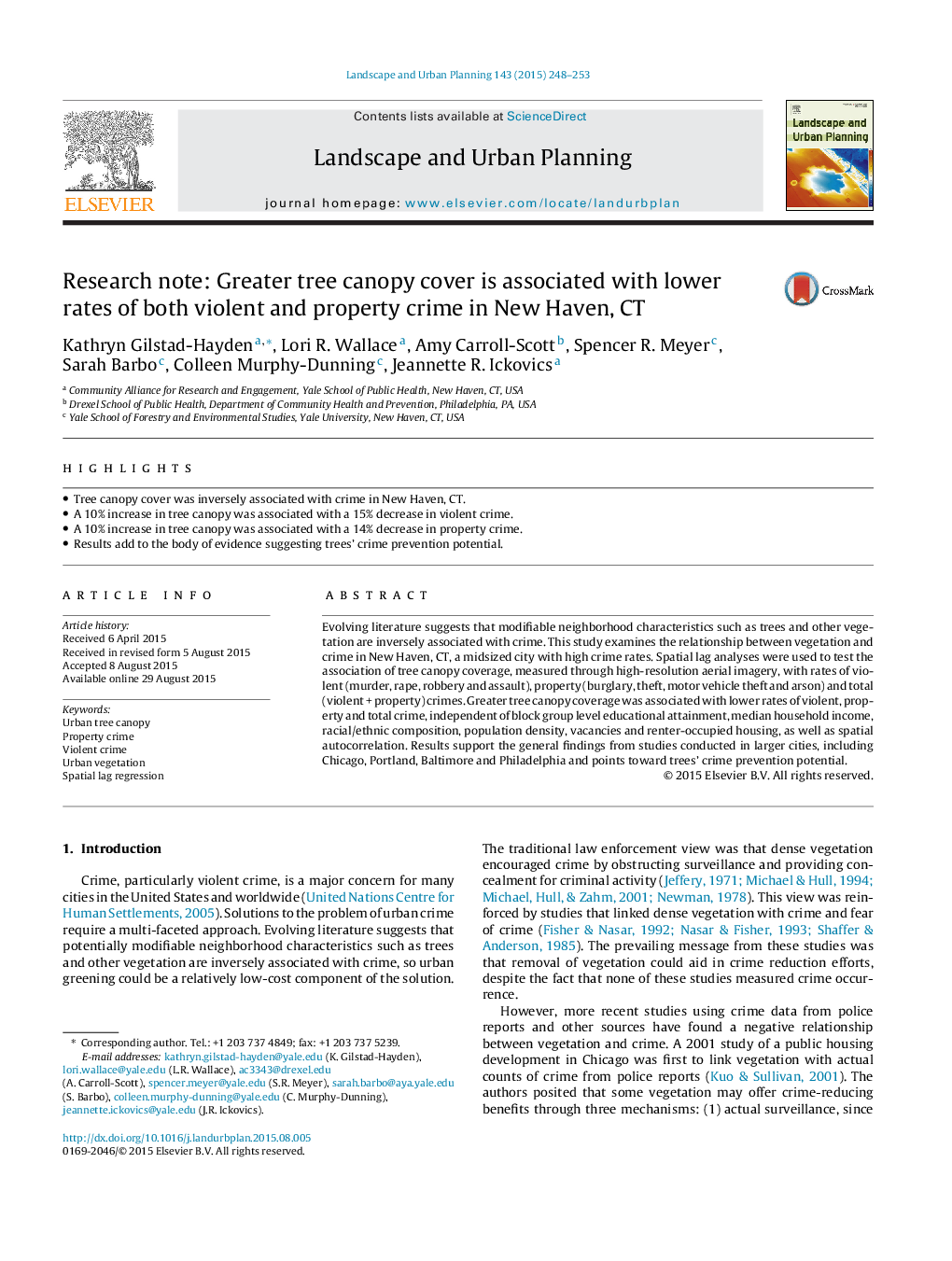| Article ID | Journal | Published Year | Pages | File Type |
|---|---|---|---|---|
| 7461081 | Landscape and Urban Planning | 2015 | 6 Pages |
Abstract
Evolving literature suggests that modifiable neighborhood characteristics such as trees and other vegetation are inversely associated with crime. This study examines the relationship between vegetation and crime in New Haven, CT, a midsized city with high crime rates. Spatial lag analyses were used to test the association of tree canopy coverage, measured through high-resolution aerial imagery, with rates of violent (murder, rape, robbery and assault), property (burglary, theft, motor vehicle theft and arson) and total (violent + property) crimes. Greater tree canopy coverage was associated with lower rates of violent, property and total crime, independent of block group level educational attainment, median household income, racial/ethnic composition, population density, vacancies and renter-occupied housing, as well as spatial autocorrelation. Results support the general findings from studies conducted in larger cities, including Chicago, Portland, Baltimore and Philadelphia and points toward trees' crime prevention potential.
Related Topics
Life Sciences
Agricultural and Biological Sciences
Ecology, Evolution, Behavior and Systematics
Authors
Kathryn Gilstad-Hayden, Lori R. Wallace, Amy Carroll-Scott, Spencer R. Meyer, Sarah Barbo, Colleen Murphy-Dunning, Jeannette R. Ickovics,
